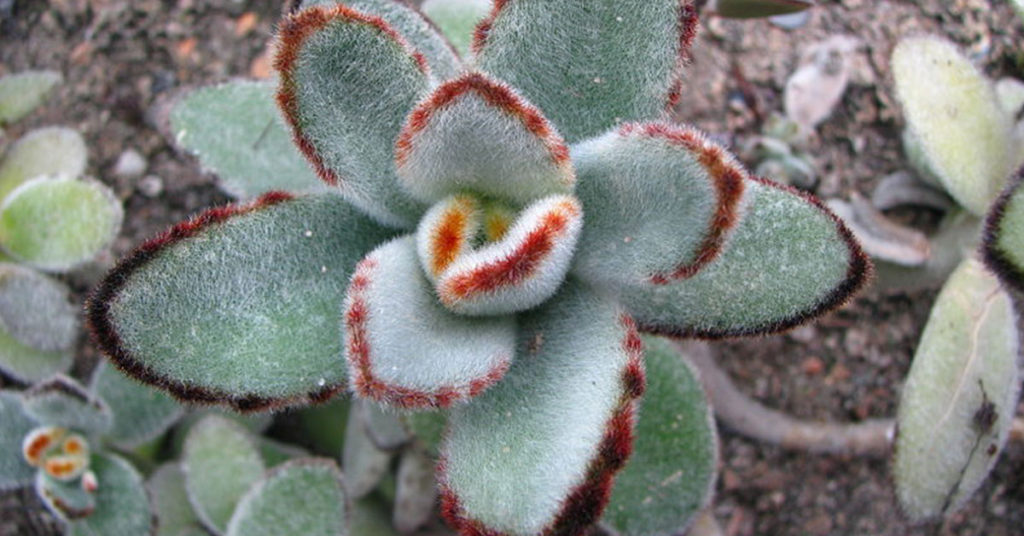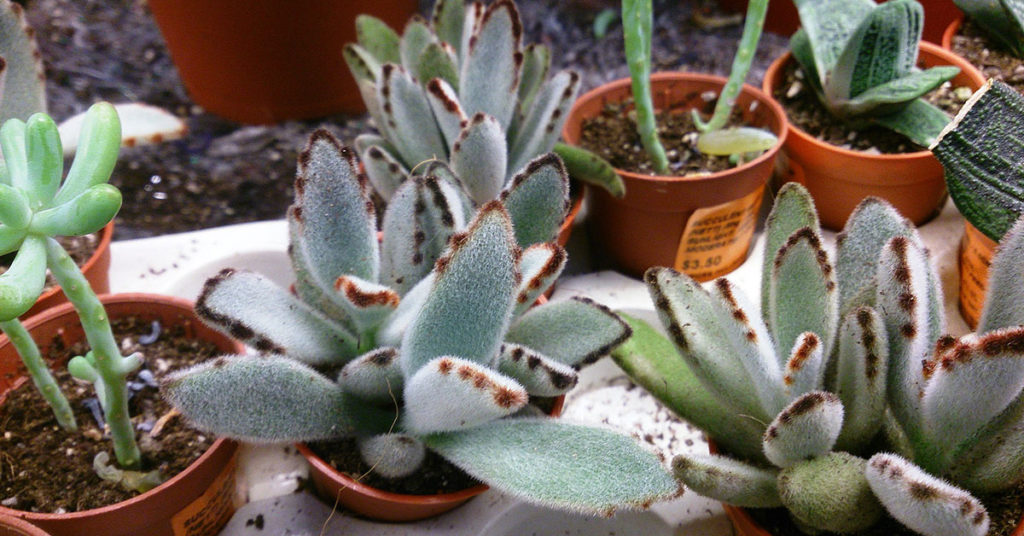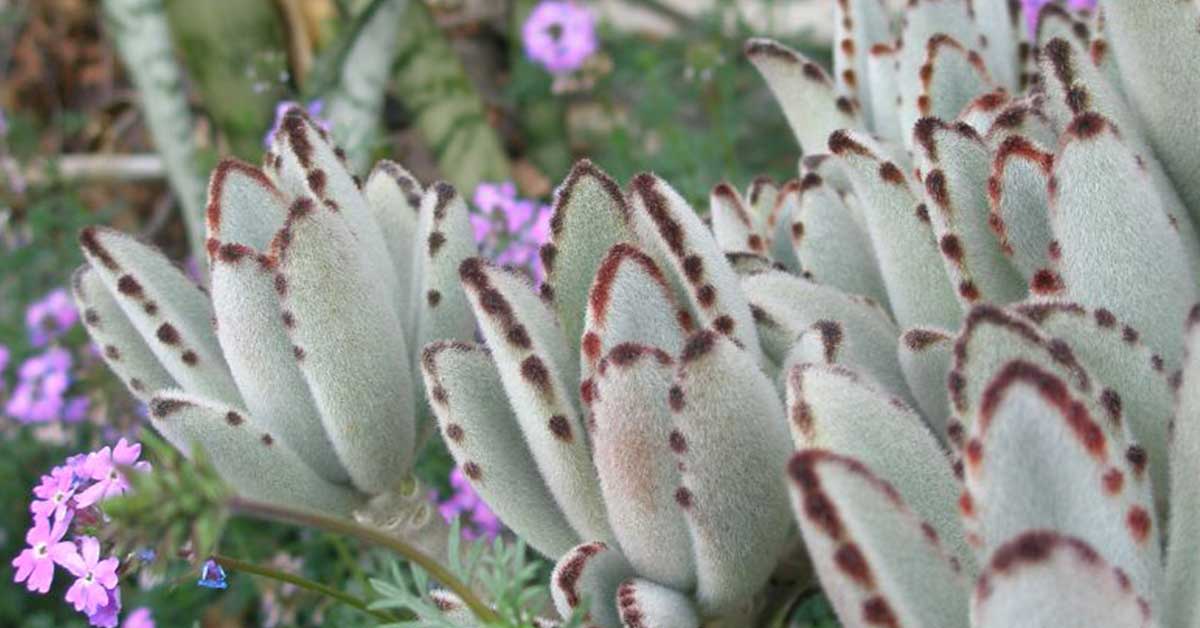I love growing succulents, especially succulents that seem reminiscent of something else. My bear paw succulent is one of my all-time favorites because the leaves look like little green bear paws. I recently got ahold of a new succulent called a panda plant and I have to say, it too is one of my favorites. Like the bear paw succulent, the panda plant has long, oval, fuzzy leaves with darkened tips that make it look a bit like a panda’s paw.
This cute little plant, native to Madagascar, is definitely a good houseplant to have for anyone who has trouble keeping plants alive. It’s low maintenance and easy to care for. Let’s dig right in.
Growing a panda plant

Panda plants are easy plants to grow, especially for beginner gardeners. But it helps to have a solid background on the plant before trying it out. These are the basic details:
- Latin name: Kalanchoe tomentosa
- Other names: White lady, donkey ears, chocolate soldiers, pussy ears, cat ears, and plush plant
- Native to: Madagascar
- Invasiveness: Somewhat
- Sun: Full sun
- Water: When the soil has dried
- Soil: Well draining, loamy, sandy soil
- Hardiness zone: 11-12
- Plant height: 8 inches
- Bloom period: Spring and summer
- Container friendly: Yes
- Fertilizer: Not needed
- Toxicity: Toxic to cats and dogs
The panda plant, also known as white lady plant, donkey ears, chocolate soldiers, pussy ears, cat ears, and plush plant, or by its botanical name Kalanchoe tomentosa, is a hardy succulent plant that grows in USDA hardiness zones 11 and 12. It is a desert plant native to Madagascar and is considered mildly invasive. This makes it an ideal candidate for growing in a container when outside of its native range in Madagascar.
This succulent is fairly small in stature, growing only to about 8 inches. It enjoys full sun, a minimum of 6 hours of sunshine per day, and well-draining, loamy, sandy soil. A succulent or cactus potting soil is perfectly adequate for growing a panda plant indoors in a container. Your panda plant should be thoroughly watered only after its soil has completely dried out.
Kalanchoe tomentosa is a container-friendly plant, and given its mildly invasive tendencies should be grown in a container. It rarely blooms when grown indoors, but outdoors, it will produce flowers in spring and summer. Fertilizer is not needed for the panda plant, but it can be provided once in the spring and once in the summer if you feel it’s necessary. Be careful where you place this plant, as it can be toxic to cats and dogs when consumed in large quantities.
Water
Panda plants don’t need a particularly vigorous watering schedule, which makes it ideal for lazier or newer gardeners. Your plant should be watered thoroughly only when the soil has completely dried out. Overwatering can cause root rot, which unfortunately has a high likelihood of killing your plant. Treat it as the desert plant that it is.
Sunlight
Your panda plant is a sun-loving, desert-dwelling plant. It’ll do best when it’s able to get beamed by direct sunlight for a minimum of 6 hours a day. Without direct, full sunlight, you are unlikely to get any flowers on your plant and it may fail to thrive.
Soil and Fertilizing
Being a desert plant, panda plants aren’t all that picky. They do well in just about any potting soil, but a well-draining, sandy, loamy soil like a standard cactus or succulent potting soil will produce the most ideal results. Your panda plant will not need fertilizer, but you can provide it once or twice a year in spring and summer if you feel it’s definitely needed. Don’t fertilize during its dormant seasons of fall and winter.
Invasiveness
The panda plant is considered to be mildly invasive. If you’re conscientious, you can probably keep it managed and prevent it from spreading out of control. However, when planted outside of its native range, we recommend keeping it in a container that limits its spread.
Growing a panda plant in containers

The panda plant is mildly invasive, which is why we recommend always growing it in a container outside of its native habitat in Madagascar. These succulents will do well in just about any potting soil, but a well-draining, sandy, loamy soil like a standard cactus or succulent potting soil will produce the most ideal results. If you live in a hardiness zone cooler than zone 11, you will need to bring your plant indoors during the winter. Indoor plants should be placed in a sunny window.
Propagating your panda plant
Propagating panda plants is extraordinarily easy. Like many succulents, you can propagate a panda plant by simply taking a leaf and placing it in soil that is kept somewhat damp. Over time, roots will emerge from the cut portion of the leaf and a new stalk and leaves will begin to grow. This can be a slow process, so be patient!













